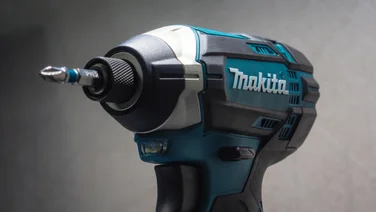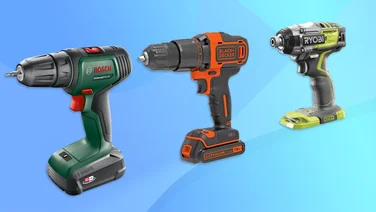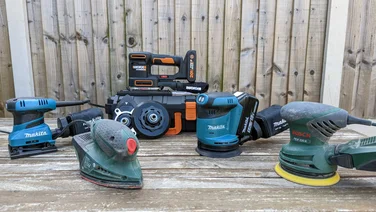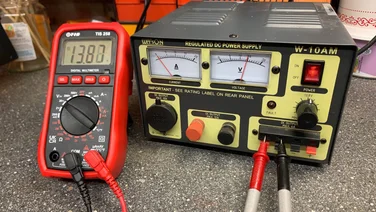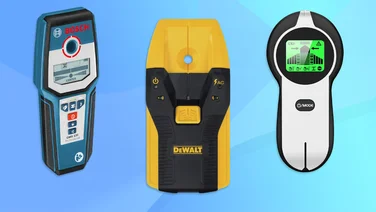To help us provide you with free impartial advice, we may earn a commission if you buy through links on our site. Learn more
- Best circular saws: At a glance
- How to choose the best circular saw for you
- How we test circular saws
- The best circular saws you can buy in 2023
- 1. Makita 1200W 190mm Circular Saw 240V: Best corded circular saw
- 2. Ryobi 18V ONE+ Cordless 150mm Circular Saw: Best cordless circular saw
- 3. Einhell TC-CS Corded Mini Circular Saw Kit - 450W: Best mini circular saw
- 4. Mac Allister 1200W 220-240V 165mm Corded Circular Saw MSCS1200: Best value circular saw

A circular saw is probably the power tool you never knew you needed – cutting a wide range of materials takes seconds, delivering a cut that’s straighter than using a jigsaw and far quicker than using hand tools.
The best circular saws operate at the fastest speeds, measured in revolutions per minute (rpm). And the faster a circular sawblade can spin, the more control you’ll have over the cut and the cleaner it will be. You’ll generally find a correlation between the blade speed and the power rating of the tool, where bigger is almost always better.
The big decision you’ll have to make is whether to go corded or cordless. Corded circular saws will never suffer from a flat battery, and a consistent 240V power supply delivers the kind of oomph that more powerful saws need. On the flip side, cordless saws offer ultimate portability, away from a conventional power source, and you won’t have to worry about slicing through a cable, especially if you’re working in a confined space.
Most circular saws offer the ability to set the cutting depth and the angle of a bevel by adjusting the saw’s angle relative to its baseplate guide. The depth of a cut will vary according to the angle – most saws will be able to cut more deeply when positioned at 90 degrees to the material, while angled cuts won’t be quite as deep.
We’ve tested the three main types of saws here – corded, cordless, and a mini circular saw – covering all-round useability, the accessories included, the noise when the saw is spinning freely and during a cut, and, of course, its ability to cut wood.
READ NEXT: Best tool bag
Best circular saws: At a glance
- Best corded circular saw: Makita 1200W 190mm Circular Saw 240V | £134
- Best cordless circular saw: Ryobi 18V ONE+ Cordless 150mm Circular Saw | £96
- Most mini circular saw: Einhell TC-CS Corded Mini Circular Saw Kit 450W | £45
How to choose the best circular saw for you
Are corded or cordless circular saws best?
The honest answer is that it depends on how and where you’ll be using them. If you’re working in an environment where there’s no readily-available electricity, a cordless circular saw is a no-brainer. Similarly, they’re the best choice if you’re making cuts around different locations in a room, a house, or a workshop, as not having to plug and unplug will be a godsend.
However, as good as cordless batteries are, they eventually go flat. While you can put a few fully-charged batteries in your toolbag, it will require forward planning and a significant financial outlay. If you’re in sight of an electrical socket, or even an extension lead, then corded saws will keep going as long as you do.
Are big or smaller blades better?
This will depend on what you’re planning to cut and how you’ll be using the circular saw. Larger blades will cut more deeply, but they can also be unwieldy. Not all blades will fit on all saws, but you can swap between blades depending on what you’re cutting.
As a rule of thumb, the more teeth a sawblade has, the neater the cut will be. However, low-powered circular saws often work best with blades which have bigger teeth.
Left- or right-handed circular saws?
Some circular saws – like the Makita, below – have a handle on the left and the blade on the right, while some – like the Ryobi – have the opposite. The logic is quite simple: left-handed users may find they have more control over the saw using their left hand, while the reverse is true for right-handed people. Especially if you’re cutting larger sheets, having the blade on one side might be more preferable than the other. It makes sense to choose whichever is comfortable or appropriate for you.
But, while a pro might have both in their workshop, for the vast majority of home DIY-ers, it makes little practical difference.
How we test circular saws
Ergonomics are key to our ratings: the easier a circular saw is to use, the safer it should be. However, before we plug in we look at cutting depth at 90 and 45 degrees, as well as the no-load speed: as a rule, the faster a blade can spin, the cleaner the cut you’ll achieve. We also consider the quality of the instructions and safety information.
Next, we note how easy it is to change the saw’s angles, and the weight of the overall unit – weighty is good up to a point, but making repeated cuts with a heavyweight saw can lead to fatigue and related safety implications. We then consider the supplied accessories, such as a parallel guide, allen key to change the blades (and whether there’s somewhere to store it).
Finally, we cut a variety of pieces of wood, including plywood, decking and a wooden fence post to gauge a saw’s ability. Here we’re considering the ergonomics, noise levels and the neatness of the cut.
READ NEXT: The best multi-tool you can buy
The best circular saws you can buy in 2023
1. Makita 1200W 190mm Circular Saw 240V: Best corded circular saw
Price: £134 | Buy now from Toolstation

There’s no doubting the quality of the Makita, which goes a long way to explain the brand’s popularity among tradespeople. With the exception of the handle and motor shroud, pretty much everything here is made from metal and it feels like it could withstand an atomic blast, let alone a drop from a workbench.
With its handle to the left of the blade, it’s easy to use – especially with well-placed trigger and trigger release buttons on the handle – and made short work of our test cuts. We liked the saw’s reassuring 3.8kg weight, and it delivered confidence in operation, but it may be too cumbersome for some uses. It recorded 100dB when running freely, and 108dB while cutting.
It’ll cut to a depth of 66mm (46mm at a 45 degree angle), and can easily be adjusted by sliding a lever to tilt the footplate, but there’s no guide, so you’ll have to make your own measurements. The bevel is better – it can be adjusted by loosening or tightening two screws, and there’s a guide to ensure accuracy. The saw comes with a parallel guide, an allen key (which stores in the saw’s handle) and, impressively, a tough, plastic carrying case.
Key specs – Weight: 3.8kg; Blade diameter: 190mm; Cutting depth at 90 degrees: 66mm; Cutting depth at 45 degrees: 46mm; No-load speed: 5,200rpm
2. Ryobi 18V ONE+ Cordless 150mm Circular Saw: Best cordless circular saw

Price: £89 | Buy now from Ryobi
For sheer portability, the Ryobi is tough to beat. It weighs just over 2kg without the battery pack, and is surprisingly compact for a full-sized circular saw. And being part of Ryobi’s ONE+ battery-sharing ecosystem means that it’s affordable, so long as you already have a battery and charger. Plugging in one of those chunky batteries will get you a decent run-time – Ryobi claims a 2.5Ah battery will cut 36 metres of 13mm plywood on a charge, while the larger 5Ah battery increases this to 80 metres, which is more than you’re likely to need in a single sitting. Once the battery is connected to the side of the saw, you simply press a two-way release switch either left or right and pull the trigger.
It was the quietest saw on test here, registering 89dB when spinning freely, and just 101dB during a cut. The large-toothed saw made a smooth and clean cut, and will do so down to a depth of 45mm at 90 degrees, and 32mm at 45 degrees – not quite as deep as the Makita, but more than sufficient for most DIY jobs. The depth of the cut is adjustable by loosening and tightening a knob at the back of the saw, while the angle of the cut is adjusted in the same way via a knob at the front. Scales showing the depth and angle are very helpful and welcome additions.
With the blade to the right of the handle, it’s a little easier for right-handers, but, thanks to the well-positioned two-way release switch, left-handers will have little problem using it.
Key specs – Weight: 2.16kg (excluding battery); Blade diameter: 150mm; Cutting depth at 90 degrees: 45mm; Cutting depth at 45 degrees: 32mm; No-load speed: 4,700rpm
3. Einhell TC-CS Corded Mini Circular Saw Kit – 450W: Best mini circular saw

Price: £45 | Buy now from Wickes
If you’re working in a confined space, a mini circular saw can be indispensable and Einhell’s TC-CS is a great example. At just 2kg, it’s light and, with a handle roughly the same size as a grinder, it’s easy to hold.
Operation really couldn’t be simpler – just set the depth you need to cut (a guide allows for accurate measurements from zero to 23mm), release the footplate lock and flick the main switch. For safety, the switch needs to be held and the saw will stop once it’s released.
The Einhell is great for making quick 90-degree cuts, but it can’t cut at an angle. Still, for zipping through long plywood cuts, trimming firewood, or making neat plunge cuts, it’s perfect. The saw is supplied in a case which also contains a parallel guide and a pair of allen keys for changing the disc.
Key specs – Weight: 3.37kg; Blade diameter: 85mm; Cutting depth at 90 degrees: 23mm; Cutting depth at 45 degrees: NA; No-load speed: 6,000rpm
4. Mac Allister 1200W 220-240V 165mm Corded Circular Saw MSCS1200: Best value circular saw

Price: £40 | Buy now from B&Q
The Mac Allister blends much of what we really like about the Makita with a much lower price tag, so we can forgive the more extensive use of plastic in its construction. The blade-on-the-right/handle-on-the-left arrangement will please left-handed users and professionals alike, and, with an unlocking switch that’s perfectly placed for the thumb, it’s ergonomically sound too.
You lift a lever to adjust the cutting depth, or turn a knob to vary the cutting angle – and both have marks to ensure accuracy. It’s a touch louder than the Makita, in both its no-load performance and during cutting, but its no-load speed is only a fraction behind. For occasional use, the Mac Allister is highly impressive, especially given that appealing price tag.
Key specs – Weight: 3.37kg; Blade diameter: 165mm; Cutting depth at 90 degrees: 55mm; Cutting depth at 45 degrees: 38mm; No-load speed: 5,000rpm


